New Books: January 2020
1.) Solutions Manual to Accompany Organic Chemistry 2nd Edition
Author: Jonathan Clayden (Author), Stuart Warren (Author)
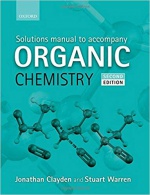
|
QD251.3 C619S 2013 Book Description The solutions manual to accompany Organic Chemistry provides fully explained solutions to all the problems that are featured in the second edition of Organic Chemistry. FEATURES – Detailed worked solutions to all of the problems in the text – Brief explanations describing the purpose of each problem and the rationale behind the solutions – Helpful notes in the margin highlighting important principles and directing students to further information in the chemical literature Intended for students and instructors alike, the manual provides helpful comments and friendly advice to aid understanding, and is an invaluable resource wherever Organic Chemistry is used for teaching and learning. (amazon.com) |
2.) Advances in Plant Phenolics: From Chemistry to Human Health (ACS Symposium Series)
Author: Guddadarangavvanahally K. Jayaprakasha (Editor), Bhimangouda S. Patil (Editor), Giuseppe Gattuso (Editor)
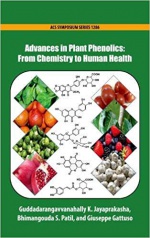
|
QP801.P4 A244 2018 Book Description Presently, the diverse researchers of the phenolics community invest their time and energy in a broad range of activities from the isolation and identification of new phenolic compounds from plant materials to the study of the effect and mechanism of action of known and novel phenolics in vitro and in vivo. Reflecting this diversity, the symposium covered widespread topics, with outstanding contributions ranging from isolation and identification of naturally occurring bioactive compounds to the understanding of their health benefits. (amazon.com) |
3.) Roles of Natural Products for Biorational Pesticides in Agricultuure (ACS Symposium Series)
Author: John J. Beck (Editor), Caitlin C Rering (Editor), Stephen O. Duke (Editor)
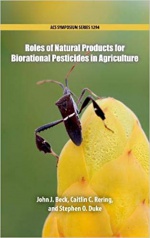
|
SB951.145.N37 R745 2018 Book Description Chemical products from nature have been used to control insect and microbial pests since the early beginnings of agriculture. Since these primitive years, natural products have played a direct role in controlling weeds, insects, plant pathogens, and nematodes. Topics of this AGRO (Agrochemicals Division) symposium at the 254th ACS meeting highlighted the use and importance of natural products as biorational pesticides as they relate to agricultural commodities. Papers presented focused on the isolation of and applied use of natural products to agricultural systems, comprising topics such as: host plant volatiles as attractants of herbivorous insects; synthetic formulations of semiochemicals as insect monitoring tools; sensitive collection techniques for in situ or in-field analyses of plant volatiles; plant-insect, plant-microbe interactions that influence insect pests or beneficial insects; plant- or microbe-produced natural products that influence insects, pathogens, nematodes, or weeds; plant-plant interactions that influence plant defense systems; and, plant-incorporated protectants for crop pest management. Scientific experts presented original research results and review of important topics from a number of diverse disciplines, including, analytical and environmental chemists, chemical ecologists, entomologists, and plant physiologists. (amazon.com) |
4.) Organic Chemistry 2nd Edition
Author: Jonathan Clayden (Author), Nick Greeves (Author), Stuart Warren (Author)
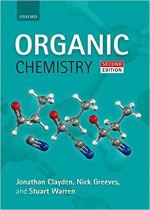
|
QD251.3 C619O 2012 Book Description Inspiring and motivating students from the moment it published, Organic Chemistry has established itself in just one edition as the student’s choice of an organic chemistry text. The second edition refines and refocuses Organic Chemistry to produce a text that is even more student-friendly, coherent, and logical in its presentation than before. Like the first, the second edition is built on three principles: An explanatory approach, through which the reader is motivated to understand the subject and not just learn the facts; A mechanistic approach, giving the reader the power to understand compounds and reactions never previously encountered; An evidence-based approach, setting out clearly how and why reactions happen as they do, giving extra depth to the reader’s understanding. The authors write clearly and directly, sharing with the reader their own fascination with the subject, and leading them carefully from topic to topic. Their honest and open narrative flags pitfalls and misconceptions, guiding the reader towards a complete picture of organic chemistry and its universal themes and principles. (amazon.com) |
5.) Natural Product Biosynthesis: Chemical Logic and Enzymatic Machinery
Author: Christopher T Walsh (Author), Yi Tang (Author)
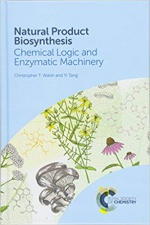
|
QD415 W35N 2017 Book Description Authored by leading experts, this textbook provides a thorough description of the types of natural products, the biosynthetic pathways that enable the production of these molecules, and an update on the discovery of novel products in the post-genomic era. Appropriate to this modern era, the approach of this book is to codify the chemical logic that underlies each natural product structural class as they are assembled from building blocks of primary metabolism. This text will serve as a reference point for chemists, as well as for computational biologists, pharmacognocists, chemical ecologists, bioengineers and synthetic biologists. (amazon.com) |
6.) Molymod MMS-072: Molecular Set for Inorganic & Organic Chemistry, 72 atoms
Author: Royal Society of Chemitry; Spring Enterprises.

|
QD480 M731 2015 Book Description These popular molecular modelling sets can be used to make many different molecules. This makes them ideal for student use and also for educators and researchers. The set contains 72 colour-coded atoms, 105 links and 5 lone pair electron clouds. The shorter links can be used for single bonds, while the longer, flexible links can be used for double or triple bonds. Using molecular models can help students to visualise concepts such as isomerism through hands-on learning. The models can also be used to learn about balancing equations and molecular geometry. (amazon.com) |
